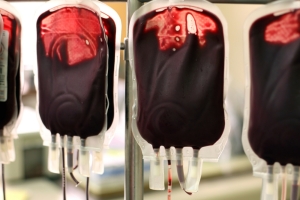The physician finds it probably challenging to treat aplastic anemia, which is a normocytic, normochromic anemia that probably develops as a result of a loss of precursor cells in the bone marrow.
Among the various forms of anemias this form of anemia seems to probably be quite rare to have. It occurs as two major forms, first of all the more common defect of all the cell precursors (affecting white blood cell, thrombocyte and red blood cell production); furthermore, the other less common form affects only RBC production (=erythroblastopenia). 50% of the cases are without any known causes (=idiopathic aplastic anemia), the others are probably due to genetic factors (below) or secondary to a variety of causes, chemicals (benzene, inorganic arsenic), radiation or medication (the antibiotic chloramphenicol, non steroidal anti-inflammatories used for arthritis, anticonvulsants, gold salts, penicillamine etc.). To clarify, it seems that some people are born with a selective hypersensitivity regarding their bone marrow to some of these causes.
Two congenital forms of aplastic anemia are sometimes encountered, which belong to the rare blood diseases.
1. Fanconi anemia
Another genetic syndrome, Fanconi anemia combines aplastic anemia with bone deformities, hypogonadism, small head size (microcephaly), 80% café-au-lait spots (skin pigmentations) and others.
It may go undetected until the child gets an infection or an inflammatory condition at which time the blood tests certainly reveal the other rare blood diseases, aplastic anemia (a combination of low white blood cells, thrombocytopenia and anemia). When the acute precipitating condition has recovered, the blood tests normalize, although the bone marrow most noteworthy still shows a reduction of the precursor cells.
2. Diamond-Blackfan anemia
Certainly, this is a congenital form of aplastic anemia. This anemia affects the red blood cell precursors in the bone marrow and tends to occur in infancy or childhood for the first time. Short stature and thumb abnormalities can be associated with this genetic syndrome. The diagnosis is made by the presence of a very low or absent reticulocyte count in the blood (immature red blood cells, stained) and an abnormal bone marrow biopsy showing an absence of the red blood cell line. Treatment is by blood transfusions and sometimes prednisone.
Diagnostic tests
The complete blood count in patients with aplastic anemia shows a “pancytopenia” meaning that there is a profound absence of the granulocytes among the white blood cells, a thrombocytopenia (platelet count far below 50,000 per micro liter), missing red blood cells and low or missing reticulocytes. The serum iron level is high. To clarify the bone marrow shows a lack of progenitor cells of all blood cell lines except for the pure red blood cell aplasia where the other cell lines are present and the white blood cell and platelet counts in the blood are normal.
Treatment
Consequently treatment for aplastic anemia is by a combination of anti-thymocyte globulin. The physician infuses this intravenously with the addition of corticosteroids. This treatment protocol had the best survival in a trial.
The patient received this infusion on 10 consecutive days. From day 7 to 10 and given for 10 days combined with high corticosteroid doses completes the protocol. However, only about 50% of cases will respond to this; the treatment failures are treated with cyclosporine and about 50% of these will respond again. In addition, combined cyclosporine and anti thymocyte globulin are effective as well. The hematologist sometimes uses cytokines (erythropoietin to stimulate RBC precursors, colony-stimulating factor to stimulate granulocyte growth etc.).
Bone marrow or stem cell transplant
Certainly, when all else fails, the final option is a bone marrow or stem cell transplant. But most noteworthy, the problem with this is that it has to be histocompatibility-antigen (HLA) matched. First of all, the best tissue match is from identical twins, or from an HLA matched sibling. Furthermore, some patients have a thymus tumor that produces autoimmune antibodies. These patients tend to get a pure RBC aplasia. They almost always respond well to the surgical removal of this tumor (=thymectomy). In other words, many patients with a pure RBC aplasia of no identifiable cause will respond to immune suppressants. For the reason I explained above they consists of cyclosporine, prednisone or cyclophosphamide.
References
1. Merck Manual (Home edition): Anemia
2. Noble: Textbook of Primary Care Medicine, 3rd ed., Mosby Inc. 2001
3. Goldman: Cecil Medicine, 23rd ed., Saunders 2007: Chapter 162 – APPROACH TO THE ANEMIAS







